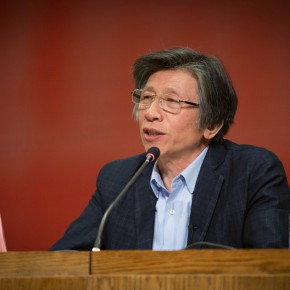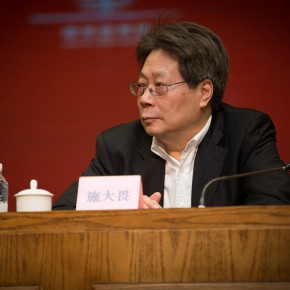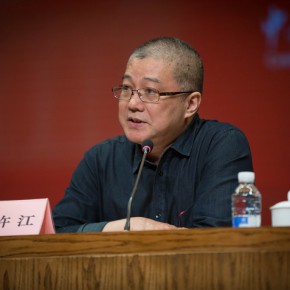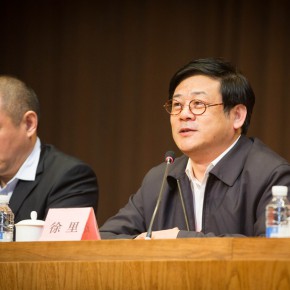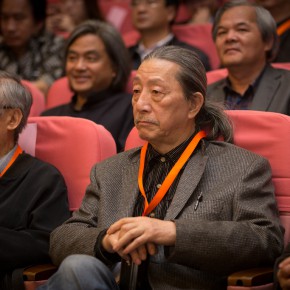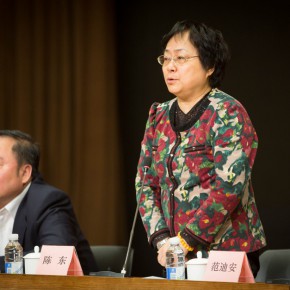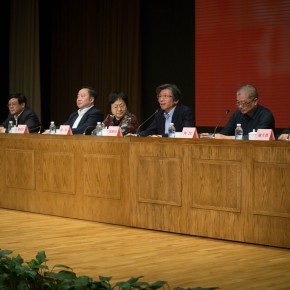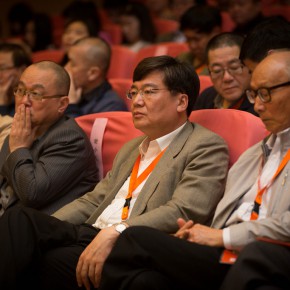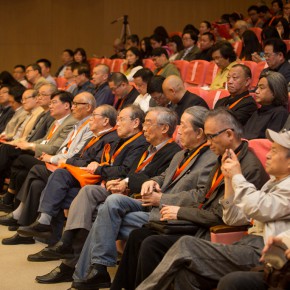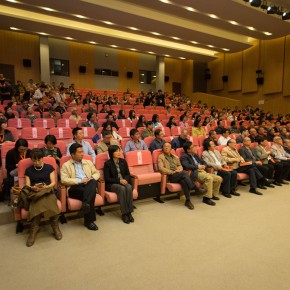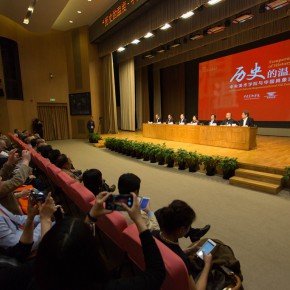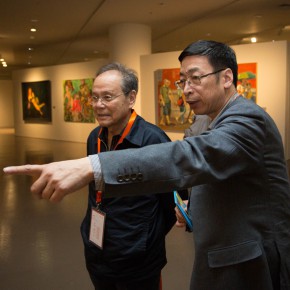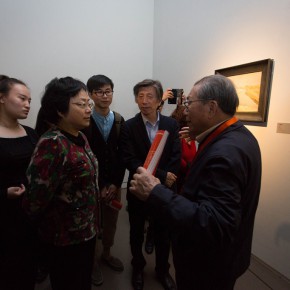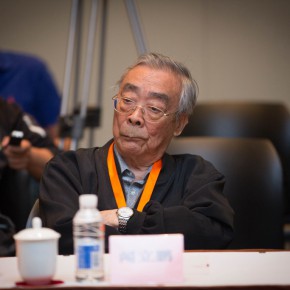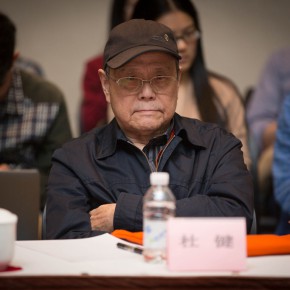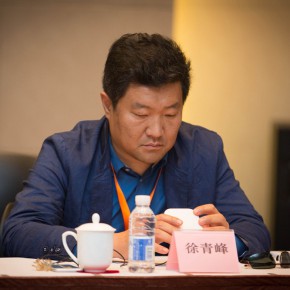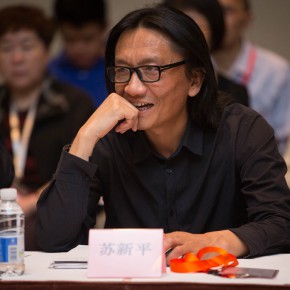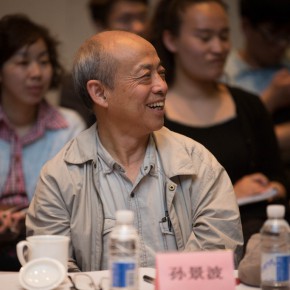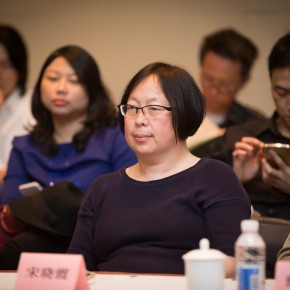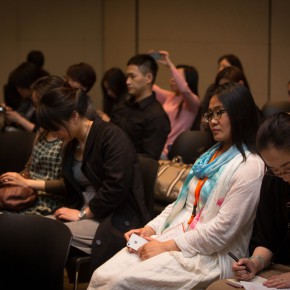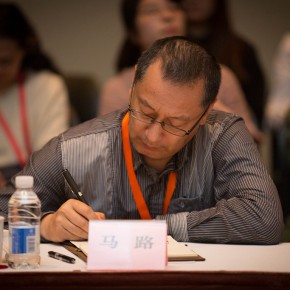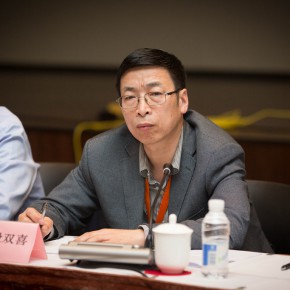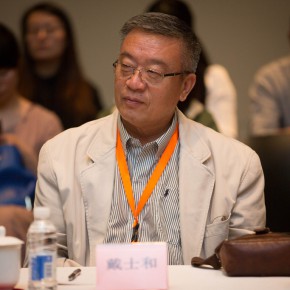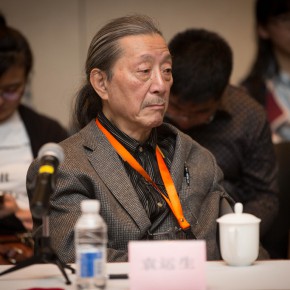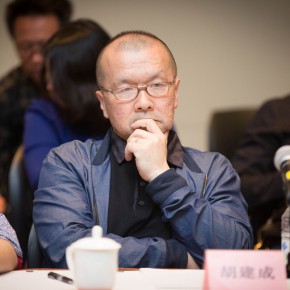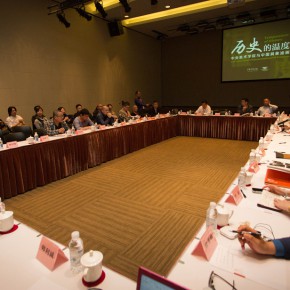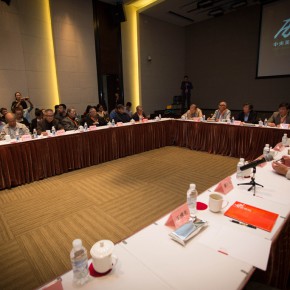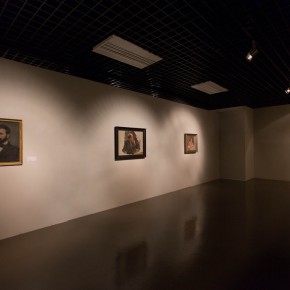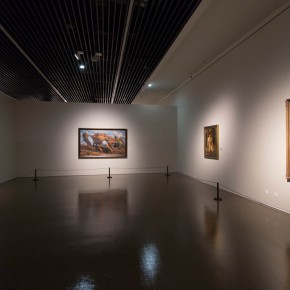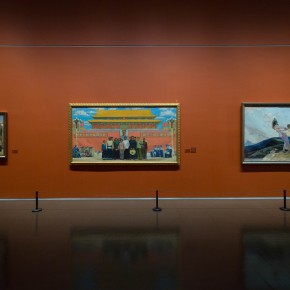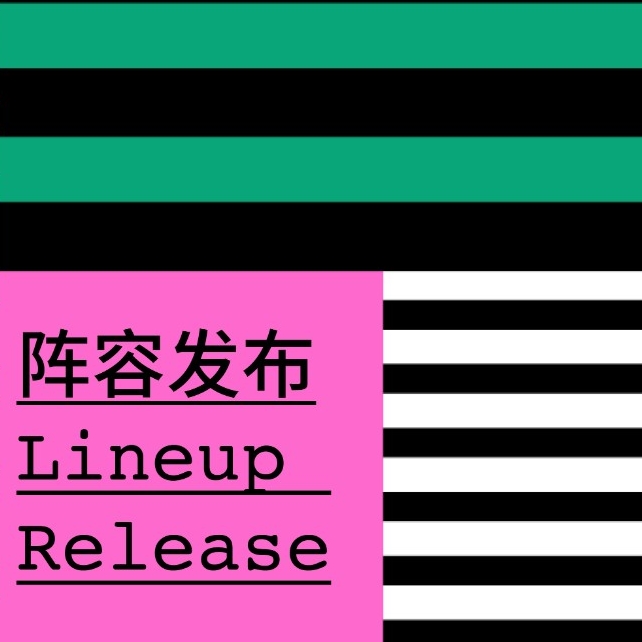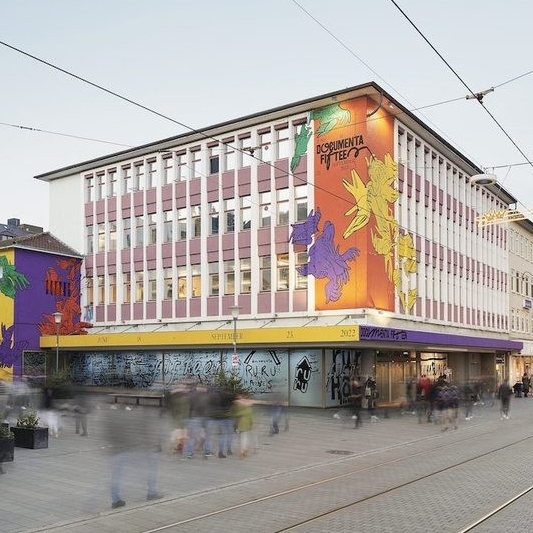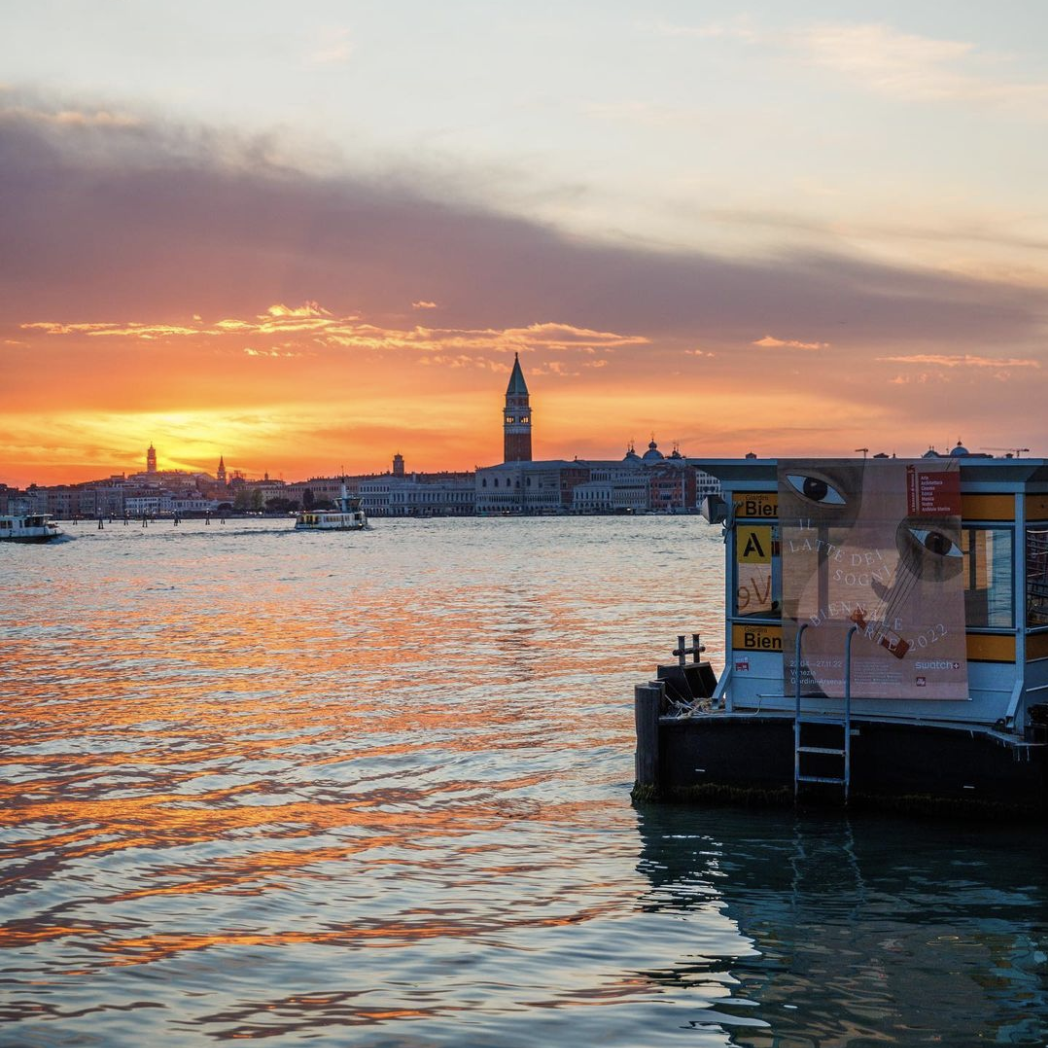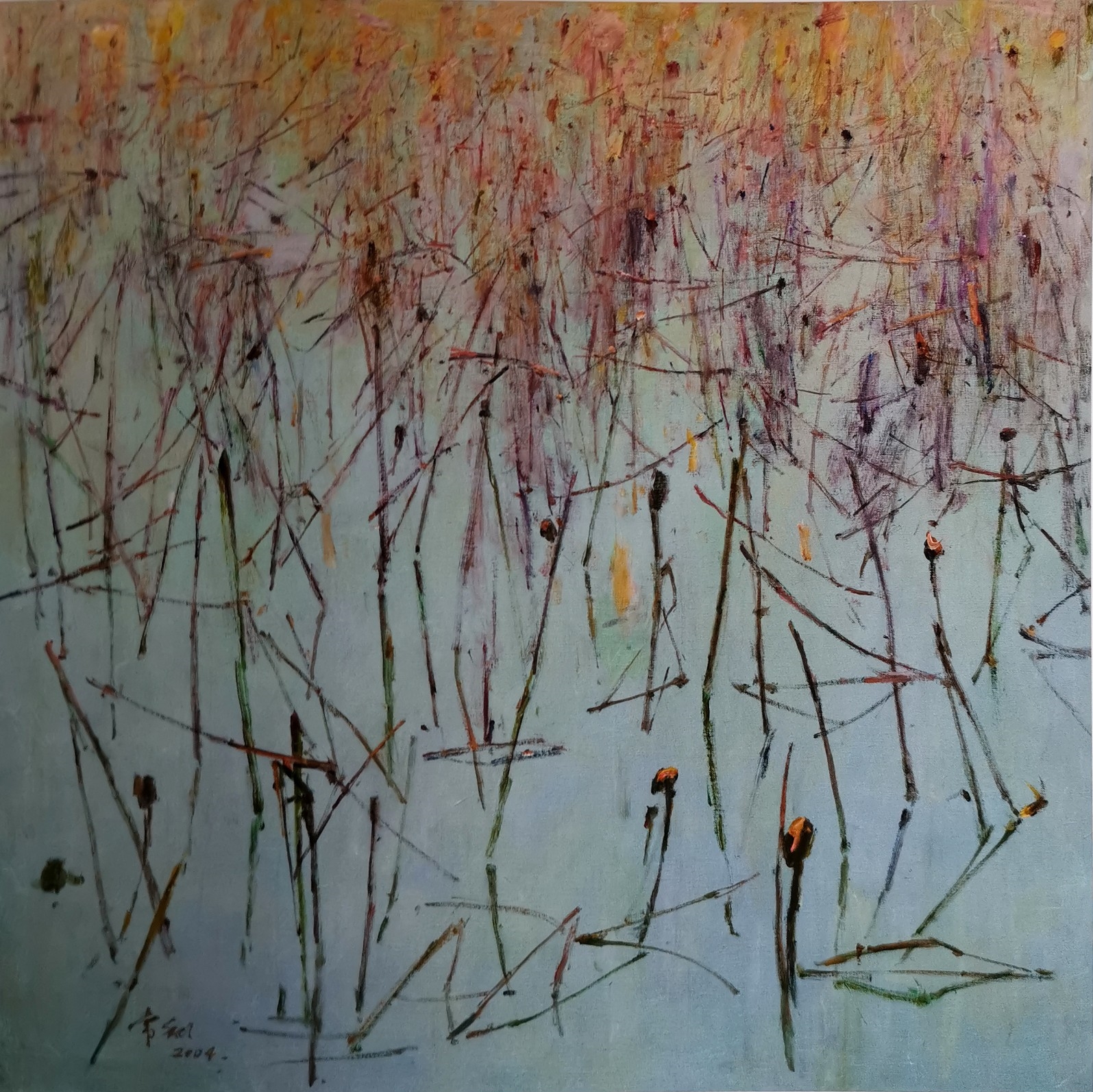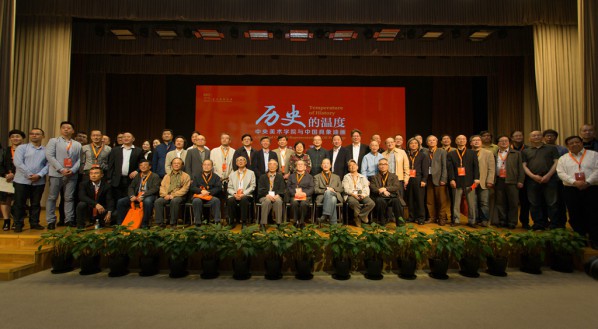
At 10:00 on April 29, 2015, jointly hosted by CAFA and China Art Museum, “The Temperature of History–CAFA and Chinese Representational Oil Paintings” was officially inaugurated at China Art Museum. The majority of the exhibited works are from the treasured representational oil paintings of the 20th century in the CAFA collection, as well as collections from the National Art Museum of China, Xu Beihong Memorial Hall, China Art Museum and the artists’ collections, including a total of more than 300 works, placed in 5 exhibition halls, covering more than 2000 square meters. The exhibition is divided into 4 sections, including Eastern Enlightenment, National Narrative, Artistic Essence and Contemporary Concerns, not only drawing the outline of the creation of the CAFA painter groups through different historical periods from the perspective of history but also starting from the association of oil painting art and the construction of the new Chinese culture, to present the essential value and cultural significance of oil painting.
The opening ceremony was presided over by Li Lei, Deputy Director of China Art Museum, artists, experts and scholars from all over the country attended the opening ceremony. Shi Dawei, Director of China Art Museum, Xu Li, Deputy Party Committee Secretary of China Artists Association, Xu Jiang, President of China Academy of Art, Teng Junjie, Art Director of Shanghai Municipal Administration of Culture, Radio, Film and TV and Fan Di’an, President of CAFA respectively addressed the opening ceremony. In addition, as it was conspicuous that, many other leaders, honored guests, senior artists, teachers and students from CAFA attended the opening, including Gao Hong, Secretary of the Party Committee of CAFA, Su Xinping, Vice President of CAFA, Ma Lu, Dean of the School of Plastic Arts, CAFA, curator Yin Shuangxi, representatives of the senior professors including Shao Dazhen, Zhong Han, Yuan Yunsheng, Wen Lipeng, Sun Weimin, Sun Jingbo, as well as the front-line teachers of CAFA such as Prof. Yu Ding, Prof. Song Xiaoxia, Prof. Zhang Lujiang, Associate Professor Cao Qinghui, Wang Huangsheng, Director of CAFA Art Museum, Deputy Director Tang Bin, Xie Xiaofan, Deputy Director of the National Art Museum of China, etc. Finally, Ms. Chen Dong, from the Propaganda Department of the Shanghai Municipal Party Committee announced “Temperature of the History: CAFA and Chinese Representational Oil Paintings” exhibition was officially unveiled.
At the opening ceremony, Xu Li, Deputy Party Committee Secretary of China Artists Association congratulated CAFA for successfully holding the exhibition on behalf of China Artists Association, and then Xu Jiang, President of China Academy of Art reviewed the history of CAFA, and pointed out the two “peaks”– the construction and the academics of CAFA. Fan Di’an, President of CAFA spoke about the reason why the exhibition was held in Shanghai: on the one hand, Shanghai was a metropolis with the convergence between Chinese and Western culture, and also concentrated on foreign oil paintings. On the other hand, China Art Museum made a conscious effort to promote cultural exchanges, academic research and public promotion, which corresponded to the academy construction idea of CAFA on the 100th anniversary of the founding of the school. TengJunjie, Art Director of Shanghai Municipal Administration of Culture, Radio, Film and TV said it was one of the major events of the Chinese art world in both the size and quality.
After the opening ceremony of the exhibition, the journalist of CAFA ART INFO on-site interviewed several honored guests and scholars who planned and participated in the exhibition. When Fan Di’an was questioned about “what is the meaning and the future of the current representational painting with the impact of Western oil painting?” The chief curator of the exhibition and President of CAFA Fan Di’an answered that it was still heavily in need of oil paintings at present, but it was also necessary for Chinese representational paintings to find a foothold. Representational oil painting is different from realistic oil painting, and representation is a kind of form which uses a more open way to shape the images, conveying the themes. The biggest challenge of the present representational paintings is the challenge from images and videos, as Jin Shangyi said oil paintings should be stopped from becoming photos.
On the reasons and ideas of the holding of the exhibition, curator Yin Shuangxi said that the exhibition was very important for the study of art history in the 20th century, but we were weak in this part. China Art Museum was one of the most important art museums in Shanghai, with the cooperation with CAFA, it offered a very good environment and opportunity for the exhibition, so that CAFA was able to systematically comb through the history of Chinese representational paintings in the past 100 years, presenting them in Shanghai and communicating with the public.
Assistant curator the associate research fellow Dr. Guo Hongmei who has always worked on the frontline, was interviewed by the journalist of CAFA ART INFO and introduced her thoughts behind the planning and study of the exhibition, she said the exhibition had a profound historical and realistic significance. For CAFA greeting the 100th anniversary of the founding of the school, it played an important role in the development of Chinese art, especially the development of oil painting. In the new century, it was necessary and urgent to look back, reflect on, research and explore the historical contributions of CAFA, so that the young generations of CAFA could awaken to their historical position, and continue to promote the development of art.
Su Xinping, Vice President of CAFA gave suggestions to the young students who are learning oil painting and he said that oil painting had been converted into a Chinese native language after many years of practices since it was introduced into China, we could say that “it is Chinese oil painting”. As young students, they studied in different disciplines such as Chinese painting, oil painting, print, sculpture, which were divided by the basis of learning, but students should not position themselves in a “professional” category, the boundaries of the art disappeared today, instead one should adhere to his/ her road to art.
On the afternoon of the opening day, two academic seminars on “Temperature of the History: CAFA and Chinese Representational Oil Paintings” were held at the multiple function hall of China Art Museum. The first one was held by Shao Dazhen, from CAFA, while the second one was held by Prof. Yin Shuangxi, from CAFA, and Fan Di’an gave a summary statement. The honored guests who were present at the seminars had an extensive and in-depth discussion on the present situation, problems, future prospects of Chinese oil painting as well as the history of CAFA, and so on.
This exhibition continues to August 2, 2015.
Text by Yu Ya, Lin Jiabin, Photo by Yang Yanyuan/CAFA ART INFO
Translated by Chen Peihua and edited by Sue/CAFA ART INFO


